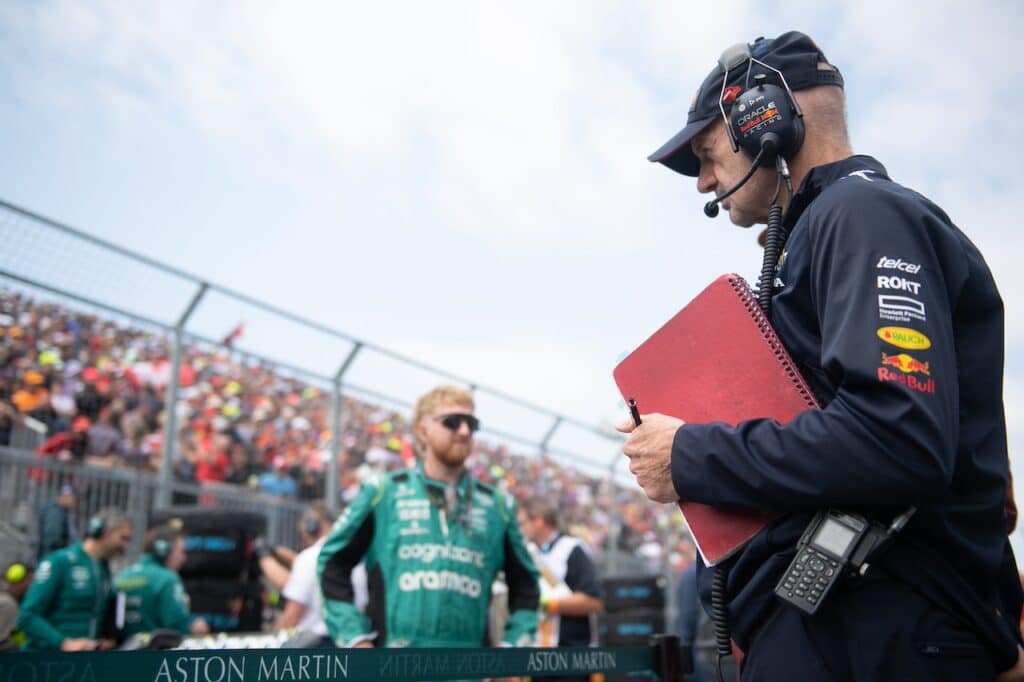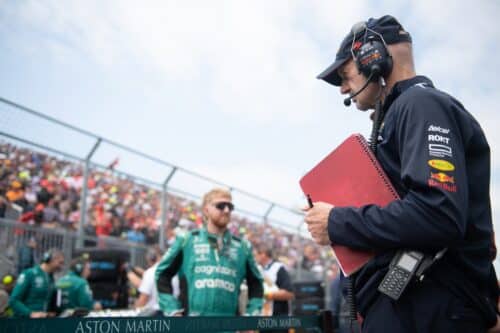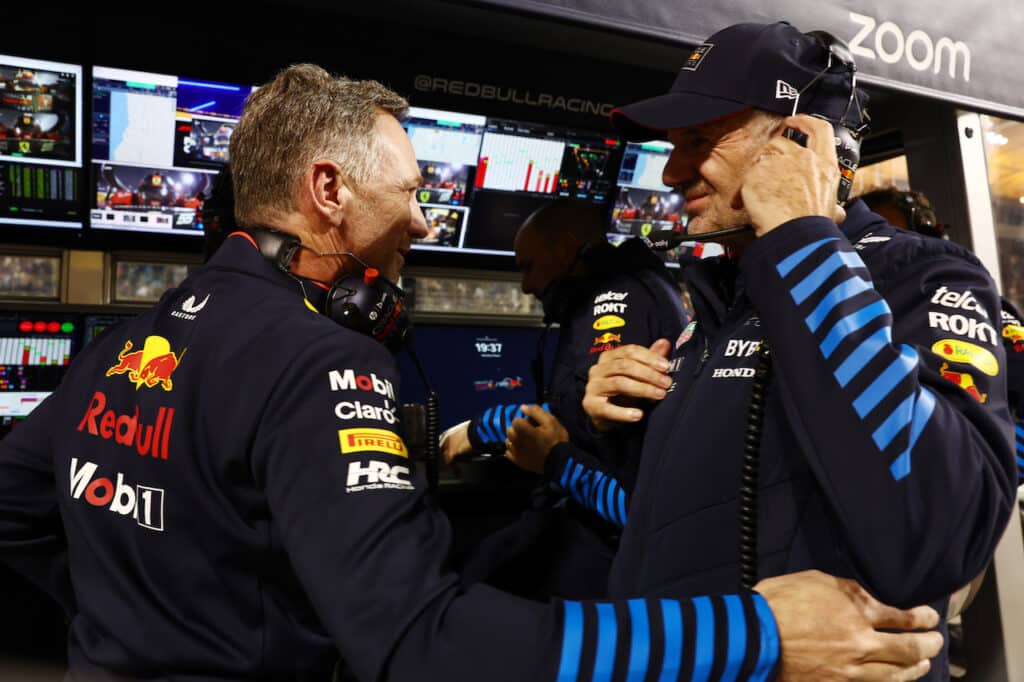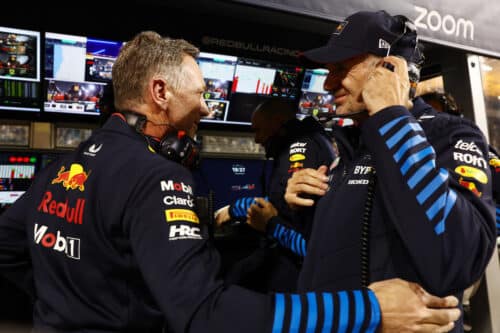Ferrari, Lampredi and the twin-cylinder
A daring project in the era of front-engined single-seaters
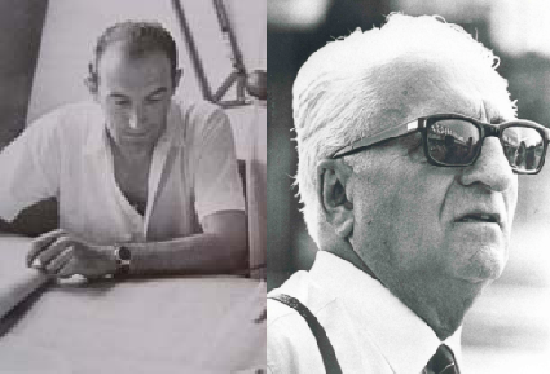
What we are going to tell is a fantastic amarcord regarding the Maranello company. Previously we had the opportunity to talk about an adventure that never really began, namely that of “dream” Indy in the mid-80s. A project that had begun thirty years earlier with Alberto Ascari attempting to challenge the American giants with a Ferrari that Drake himself had reluctantly allowed to bring, only because «It's Ascari who asks me», and who did not take well the bitter return of that army which had been thrown into disarray. Well, from that ambitious adventure was born what we can today consider another daring project of the Scuderia.
The engineer who followed the competitions at the time was Aurelio Lampredi. Having joined the team in 1946, he initially remained there for only one year due to disagreements with the designers of the time, Busso and Colombo. He was recalled a short time later at the behest of Ferrari himself after the aforementioned designers had left their roles - Busso went to Alfa, Colombo opened a consultancy firm - and began to design a new type of 12-cylinder 4500cc engines. cm3 thanks to whom Froilan Gonzalez took the Tipo 375 F1 to victory at Silverstone. In 1952 it was at the Indianapolis 500 when Ascari attempted the feat and noticed how all the participating cars were equipped with large and somewhat cumbersome yet powerful engines. From here an idea began to haunt his head which slowly began to take shape on the flight that took him back to Europe: to build an engine that was smaller than the competition but capable of making the car a winner on most circuits.
Having returned to the old continent, he began to sketch out the first calculations and drawings, until he came up with an extravagant twin-cylinder of around 1250 cm.3 per cylinder. The fact remained that the project had to be discussed during the weekly meeting with the Commendatore and all the other designers. In 1954, when the right moment arrived, Lampredi came up with his idea, to the dismay of those present and with Enzo Ferrari himself who immediately rejected the project, followed by all the others. But engineer Lampredi came out with a phrase so icy that Ferrari himself was unable to reply: «Here, among many practitioners and practitioners, I am the engineer and I say it will go well». Those present thought that Ferrari would literally explode and throw Lampredi out, but instead he regained his composure and calmly concluded: «We'll make the engine». With that sentence the weekly meeting ended and work began to create the drive unit which took the name of Tipo 252 F1 and in a short time drawings and mathematical calculations for the compression ratios were exhibited, the truly great problem of an engine with only two cylinders and respectable power.
An anecdote of what happened was handed down to us by Romolo Tavoni, Enzo Ferrari's secretary at the time, who on the occasion of the centenary of Drake's birth in 1998, told this version: «Lampredi's speech on the two-cylinder proposal was this: “We must not be certain, we must experiment. This engine will have such a high torque that, given the average of the circuits, it will be suitable for 80% of them. Ferrari himself spoke up: “Lampredi, I'll make you do it but are you so convinced?”. Lampredi: “Yes, I'm convinced”. “Well, then, it will be a year from today or the 2-cylinder will be competitive or we will have nothing more to say to each other” concluded Enzo Ferrari.»
The project then gradually took shape and at the presentation in front of Enzo Ferrari the engine had the following characteristics: 2493 cm3, 118 x 114 racing bore and double overhead camshaft. It was then put on the test bench and turned on. According to the first and probably most imaginative version, at a certain point the engine exploded and literally flew towards the ceiling, a bit like Lampredi's hopes of having Ferrari's consent. According to some of those present, however, the engine ran fairly smoothly but at a certain point it tore the dyno attachments. Finally, Tavoni's version which tells what Ferrari did after waiting a year for Lampredi's project to take shape: «The morning of the following year, 365 days later, at 11am Ferrari telephoned Segni, the head of personnel: “What time is it today, what day is it? Well, go to the bank, get the money for Lampredi, pay him for the last two years, tell him there's no need to come and say goodbye because we said everything to each other a year ago'".
The engine presented by Lampredi actually did not have great initial power, we are talking about around 160 horsepower delivered at 5000 rpm which could do nothing against the German eight-cylinder Mercedes engines, which delivered 295 horsepower; the same four-cylinder used until then by the Maranello team had 260 and, although the Tipo 252 F1 project could have some developments, in terms of time and costs this could have led to nothing, as it was a gamble that Ferrari could not take allow.
Thus in 1955 Aurelio Lampredi's experience in the top series ended and with him the ambitious twin-cylinder project for a Formula One. In fact, at the time, balancing countershafts were not yet known and carrying forward this project could have led to a real crisis for the little horse team, but Ferrari accepted that challenge anyway - or rather a Russian roulette in which Lampredi had self-immolated himself – because he saw that the engineer had strongly asserted himself in this regard by imposing his will despite the proposals of all the others, something that Tavoni himself confirms.
As his project took off outside the Maranello factory in an unfortunately poor way and without having been able to give a true test of its potential, Lampredi also left, landing at Fiat the following year, producing the engine for the 124 and the base of the one that it would commonly become the “Lampredi Biarancio”. He also contributed to the rally victories of the Turin company, again with the 124 and 131, assuming the role of sole director of Abarth.
As far as Ferrari was concerned, the old 4-cylinder was chosen, while the two-cylinder project was set aside in some remote corner of the workshop and its story ended there, like the unborn child.
Andrea Villa
if you want to always be updated on our news
Follow us here
![F1 | Ferrari: here is the new livery for the Miami GP [PHOTO AND VIDEO]](https://f1grandprix.motorionline.com/wp-content/uploads/2024/05/livree-ferrari-gp-miami-2024-1024x691.jpg)
![F1 | Ferrari: here is the new livery for the Miami GP [PHOTO AND VIDEO]](https://f1grandprix.motorionline.com/wp-content/uploads/2024/05/livree-ferrari-gp-miami-2024-500x338.jpg)
